What is the triangle?
It is a very simple learning tool for remembering to have adequate space between tori and uke for forward throws. It is applicable to pretty much every forward throw I can think of - Uchi mata, Tai otoshi, Seoi nage, Harai Goshi etc...
The triangle refers to a set of three imaginary lines on the mat. The base line for the triangle runs between uke's toes and its peak's height changes according to the size of you and your uke.
As you will notice the Judoka above has positioned himself so that the natural lines of the edge of the mat correspond to the imaginary lines of the triangle. This makes it so much easier for beginners as they have a constant reference point for where the peak of the triangle should be.
What do you do with it?
The triangle is a point of reference for the first step tori will make with his foot when he attempts the entry for a throw. Normally this step is made simultaneously with the tsurikomi action as tori commences his kuzushi and begins his tsurkuri.
So as tori and uke stand opposite each other in the classic uchikomi starting position.
Tori then steps to the peak of the imaginary triangle.
If you don't step on the peak of the triangle and instead step on the base line that runs between uke's toes then this is the result:
Your hips crash into uke, because there is no space. This is bad enough if you haven't moved uke, however, if you do this as you have just done a big pull of uke to bring them onto their toes then instantaneously you will have rocked uke back onto their heels. The result will be stillborn kuzushi and your own body and that of uke both trying to fit into the same space.
This image shows the triangle outlined in black. Tori's feet indicated by red 'T's and uke's hips represented by a blue line.
In this example tori has stepped too close with his feet placed on the line of uke's toes.
As such his hips and uke's are trying to fit into the same place, an impossibility.
The placement of your initial foot on the peak of the triangle therefore means that even with your application of kuzushi to uke there will still be space for your hips and body to fit into.
Tori steps to the peak of the triangle
Tori’s right foot has remained exactly where it was when he first planted it and has merely brought his other foot into position.
There is space for tori’s body to pivot into and uke remains off balanced.
So every time you go to uchikomi for forward throws remember to observe the triangle and remember to leave yourself enough space to both off balance uke and fit in your own body.
This also applies to moving situations such as nagekomi.
Note how tori observes the triangle concept in this O uchi - Tai otoshi nagekomi
Because this lack of space is such a common problem amongst beginners you see many of them doing things to try and compensate for the problems caused by being to close, without actually addressing the underlying symptoms. A common method is what I call ‘elbow slip’ tori’s elbow of the lapel arm slides mid way across uke’s chest as tori is so close to uke’s body the elbow has to go somewhere otherwise the shoulder would pop so its slid across uke’s body to the middle of the chest.
Using this as a solution is both a failure to understand importance of space and a failure to understand the importance and correct practice of tsurikomi...
So always keep good spacing using the triangle concept and this will allow you to keep good tsurikomi.



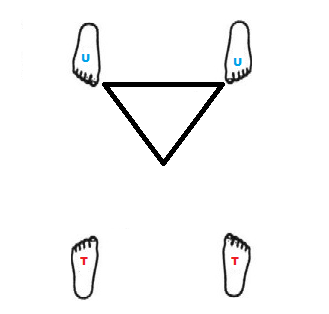
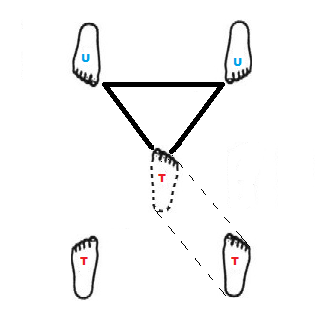


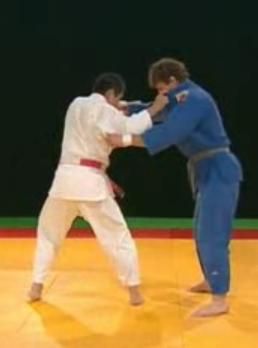
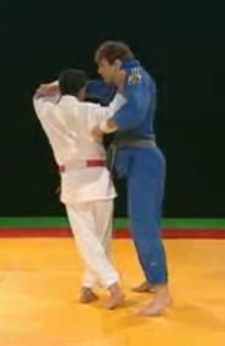
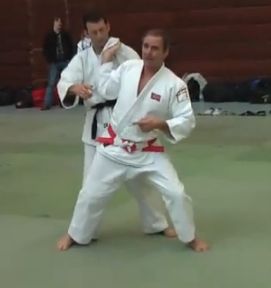
Bah, I thought this was going to be an interesting judo take on the triangle choke. My fault for being biased towards BJJ terminology. ;)
ReplyDeleteThere is very little to say other than... WELL DONE! Your explanation of these very important Judo fundamentals is very clear and precise.
ReplyDeleteI hope all Judoka avail themselves of it. Keep up the very good work.
Bill V. Judo NZL
Well, I'd think for Seoi-Nage it's more of a trapezium/trapezoid rather than a triangle. See Koga's http://www.youtube.com/watch?v=zL6zh3EWsNA. There he says "touch his big toe with your big toe". So, Seoi probably does not belong in the list.
ReplyDeleteI love your Blog!
ReplyDeleteThis comment has been removed by the author.
ReplyDeleteThanks and I have a swell supply: How Much House Renovation Cost Philippines victorian renovation
ReplyDelete